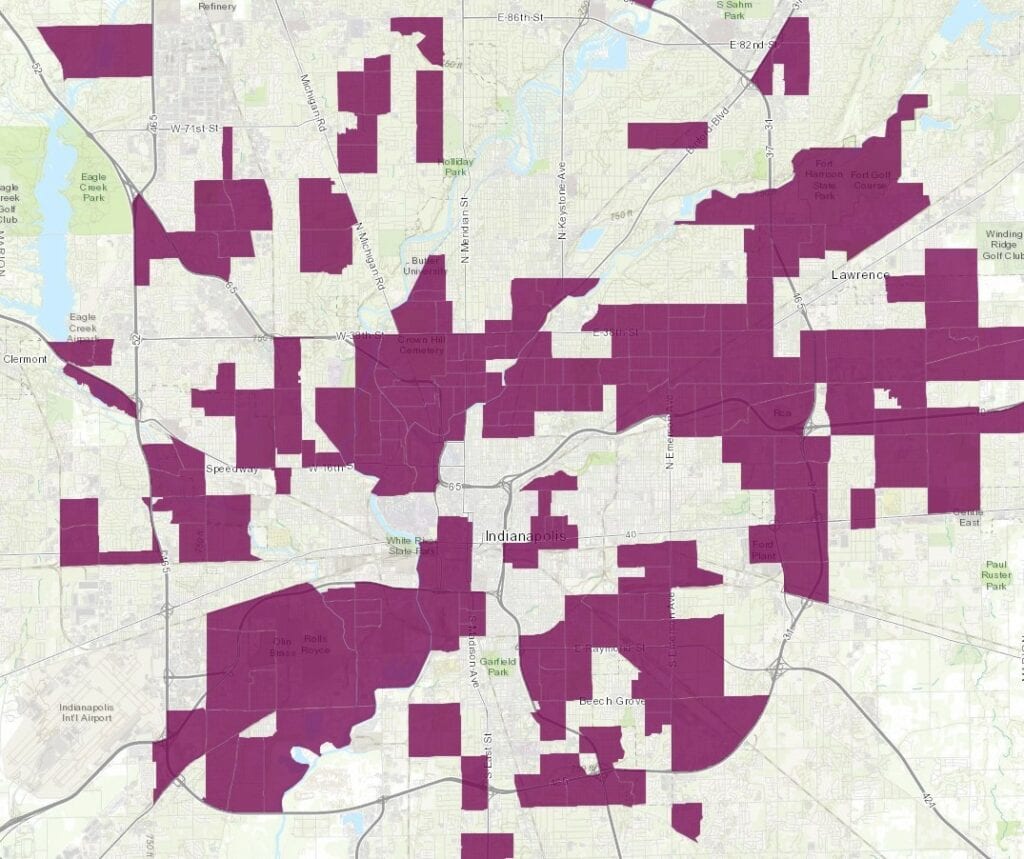When Delvonte Arnold was growing up in Gary, his family drove over 10 miles outside the city to get to a grocery store. The one shop near their home was the only one for miles, resulting in shortages and poor food selection.
Now 25, Arnold, who lives in Indianapolis, is piecing together the role living in a food desert has had on his health and the health of his family.
Arnold’s story is not unique. In Indianapolis, roughly 23% of people live in a food desert, compared to 10% of people nationally. Researchers at The Polis Center at IUPUI define a food desert as a neighborhood with a poverty rate of at least 20% and where one-third of the neighborhood lives farther than 1 mile from a grocery store.
Of the 208,000 Indianapolis residents who live in a food desert, the majority are Black or African American. A 2021 study from The Polis Center found more than a quarter of Black Hoosiers live in food deserts.
While the number of Black Hoosiers living in a food desert has increased only 4% since 2016 — compared to a 15% increase among whites and Latinos — there is a historical reason why African Americans are disproportionally impacted.
Food deserts on the map
Like other cities around the country, Indianapolis was shaped by redlining in the 1930s and ‘40s. The Home Owners’ Loan Corporation drew color-coded maps based on how desirable a location was for mortgage lending.
Unai Miguel Andres, data analyst for The Polis Center, said many of the issues Hoosiers face today — including the wealth gap and food deserts — are a direct result of redlining.

“It’s not surprising that areas that have experienced targeted disinvestment from the 1930s forward would have food deserts,” Andres said.
From a business perspective, Andres said it makes sense to put grocery stores where owners will make money. Because many neighborhoods — especially predominately Black neighborhoods — in Indianapolis are historically underinvested, many stores are forced to close. This leaves residents relying on gas stations or convenience stores for food.
The health impacts
A 2020 study from the American Heart Association found living in a food desert increases the risk of cardiovascular death in people younger than 65. Findings show that for every 1% increase in food insecurity, there is a similar increase in risk of death.
Further, dietary restrictions caused by living in a food desert increase the risk of developing diseases such as diabetes and high blood pressure.
The U.S. Department of Health and Human Services estimates African Americans are 60% more likely than whites to have diabetes and 40% more likely to have high blood pressure.
“One of the biggest problems with food deserts is that they affect dietary choices,” Andres said. “They’re a public health concern.”
Growing hope
Aster Bekele, executive director and founder of the Felege Hiywot Center in Indianapolis, has seen the impact of food insecurity on the children she mentors. Since 2004, Bekele has worked with children from kindergarten to 12th grade to foster community service and environmental preservation. Today, the children help in the center’s community garden, and many grow their own produce in individual plots.
“When we first started the program, we didn’t know how to discipline the kids,” Bekele said. “They were always jumping around or tired, and we realized it was because they were hungry.”
Bekele said many of the children she worked with had behavioral issues and difficulty paying attention in school. Since expanding the community garden, she said many of these issues have gone away.
Bekele believes while community gardens are an effective way of combating food deserts, they aren’t the sole solution.
“With community gardens, we can provide fresh vegetables and get people involved in taking care of their health and the environment,” Bekele said. “But there needs to be government support. There needs to be grocery stores built with affordable prices so people can get meat.”
Andres agrees.
“Food access means you can walk to a grocery store,” he said. “Food security means you can afford the food.”
Contact staff writer Breanna Cooper at 317-762-7848. Follow her on Twitter @BreannaNCooper.










